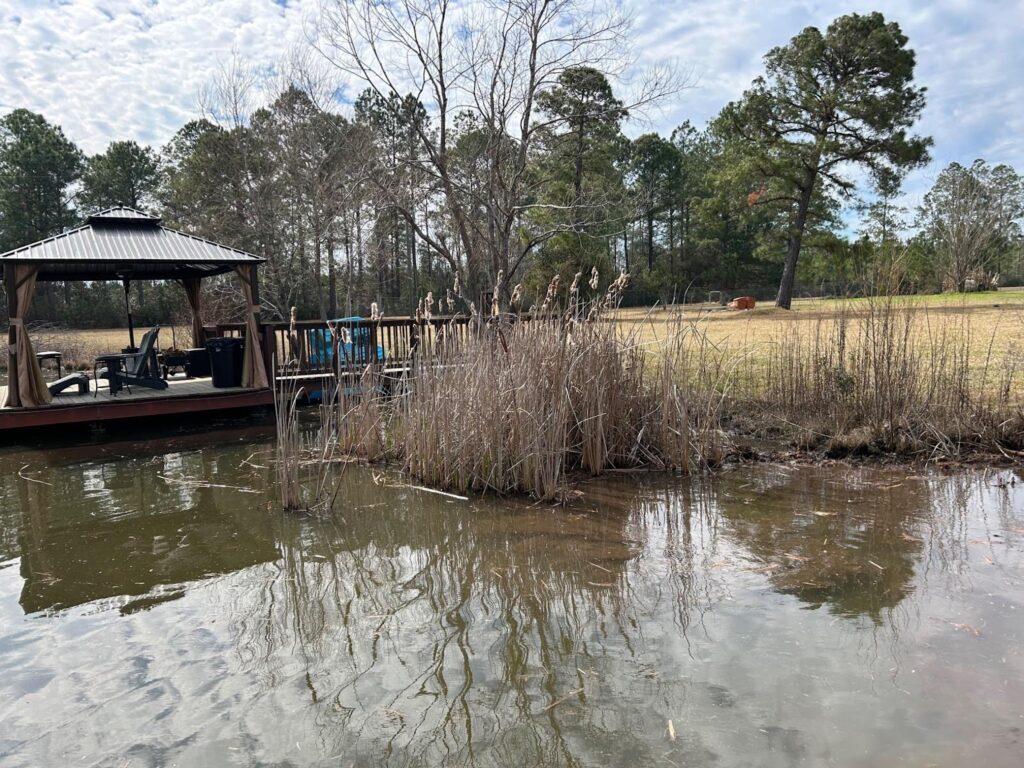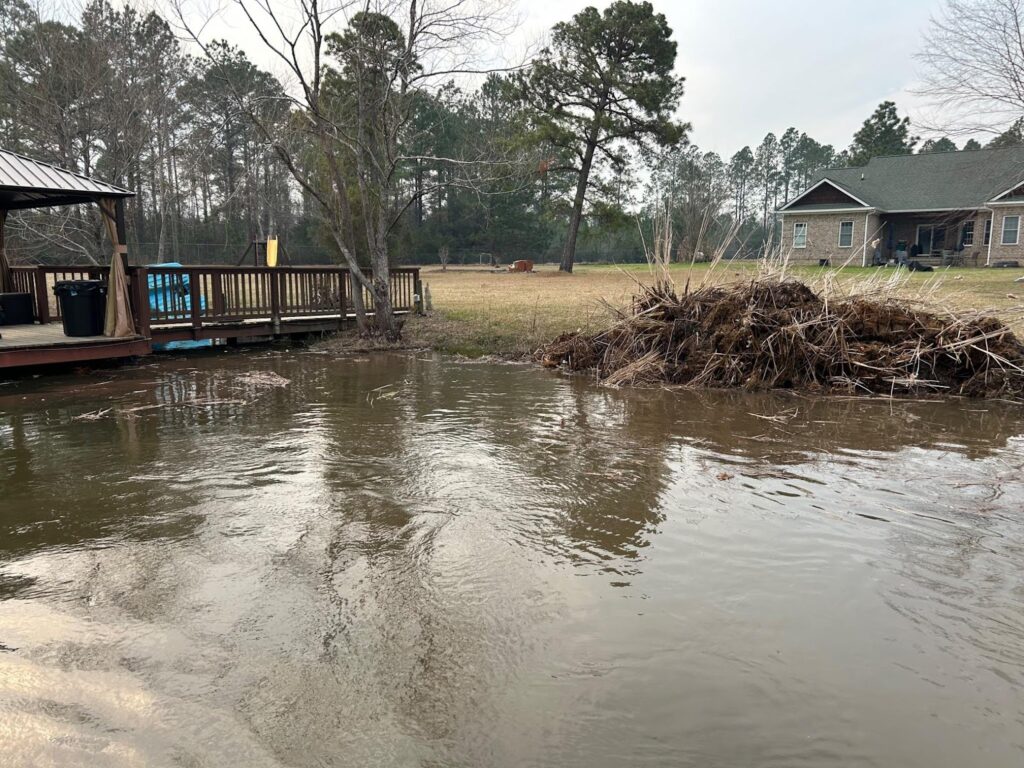In the state of Georgia, cattails (Typha latifolia) are a familiar sight along wetlands, lake edges, retention ponds, and slow-moving streams. While they’re often native and play an important role in stabilizing shorelines and filtering water, cattails can become a serious problem when they spread out of control.
If you’ve noticed cattails taking over your pond, lake, or shoreline in Georgia, you’re not alone.
Why Cattails Become a Problem
Cattails thrive in nutrient-rich or disturbed water. If the conditions are right, they multiply quickly, forming dense mats that dominate shallow water areas.
Even though cattails aren’t technically considered invasive in Georgia, they often act like it when unmanaged. Left alone, they can:
- Block water flow and fill in shorelines
- Outcompete other native plants and reduce biodiversity
- Deplete oxygen and sunlight levels
- Harm fish populations and aquatic habitats
- Create an unsightly, inaccessible water body
- Once cattails establish themselves, they’re incredibly hard to remove without the right equipment and techniques.

How to Get Rid of Cattails: The Mechanical Advantage
There are several ways to control cattails, including cutting, chemical treatments, and mechanical removal. However, mechanical extraction is often the most effective and environmentally responsible method, especially for larger infestations.
At Heavy Equip, we use specialized aquatic machinery designed to remove cattails at the root level. This not only clears the area but also helps prevent immediate regrowth. Our approach allows us to:
- Remove dense cattail stands without damaging surrounding ecosystems
- Extract the biomass before it decomposes and turns into muck
- Restore shoreline access and improve the health of your waterway
Mechanical removal is labor-intensive, but it’s the most reliable long-term solution for property owners, HOAs, lakefront communities, and municipalities looking to preserve both function and beauty.


Best Time to Remove Cattails in Georgia
The ideal time for cattail removal is late summer through fall, when the plants are fully grown and nutrient reserves are concentrated in the stalks and rhizomes. This ensures that removal is most effective and reduces the chance of quick regrowth.
Will They Come Back?
Yes, cattail control is maintenance, not a one-time fix. Much like mowing a lawn or trimming trees, keeping cattails in check requires ongoing attention. But with the proper removal schedule and expert care, you can dramatically reduce their spread and keep your pond or shoreline healthy and clear.
Frequently Asked Questions About Cattails
What are cattails, and why are they a problem?
Cattails are tall aquatic plants that grow along the edges of lakes, ponds, and wetlands. While they serve an ecological purpose in small amounts, they can quickly take over when left unmanaged. Overgrowth blocks sunlight, reduces oxygen, and crowds out native aquatic plants and wildlife.
What is the best way to remove cattails?
The most effective and environmentally friendly way to remove cattails is through mechanical extraction. This method physically removes both the visible plant and its root system, helping to control regrowth and prevent sediment buildup and nutrient loading in the water.
Can cattails grow back after removal?
Yes, cattails will almost always grow back without regular maintenance. Think of cattail removal as part of a long-term management plan, just like mowing a lawn or maintaining a garden. Scheduled removal keeps growth under control and maintains a healthier aquatic ecosystem.
Do you offer cattail removal services across Georgia?
We sure do. We serve the entire state of Georgia, including popular lakefront areas like Lake Sinclair, Lake Oconee, and communities around Macon, Atlanta, Augusta, and beyond. If you’re dealing with cattails, reach out for a free consultation and we’ll assess the best solution for your location.
Why are cattails a nuisance?
Cattails can play a valuable role in wetland ecosystems by filtering water and providing habitat for wildlife. However, in smaller ponds or managed water bodies, they can quickly become a nuisance.
Because cattails spread through a dense and aggressive rhizome (root) system, they can rapidly take over shallow areas of a pond or lake. Once established, they form thick stands that block sunlight, reduce water flow, and crowd out native plants. In smaller waterbodies, this unchecked growth can overwhelm the ecosystem, reduce biodiversity, and diminish the pond’s aesthetic and recreational value.
Do You Have a Cattail Problem? Let’s Talk!
Whether you’re in Macon, Augusta, Sylvania, Savannah, or anywhere in Georgia, our team is ready to help you reclaim your waterway.
If you’ve noticed cattails taking over your shoreline, let us take a look. We’ll assess the situation, recommend a solution, and help you protect your property while preserving Georgia’s natural beauty.
Contact us for a free consultation. We’re happy to identify your concerns and create a plan that works for you.
Mechanical Cattail Removal Done Right. Across Georgia.
Clearer water. Healthier ecosystems. Restored balance. That’s what we’re here for.
